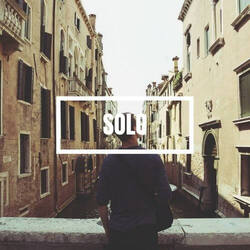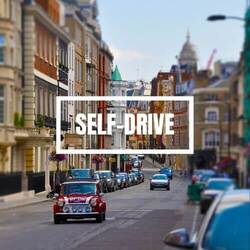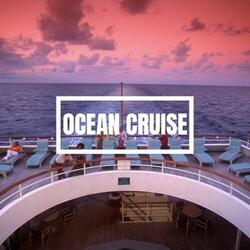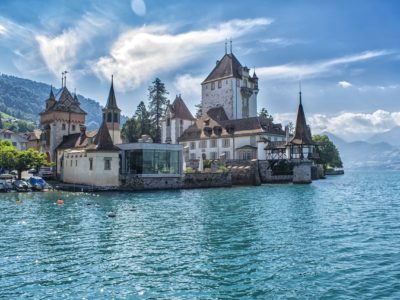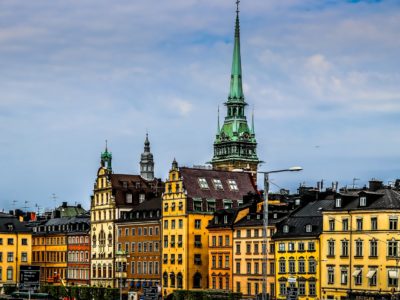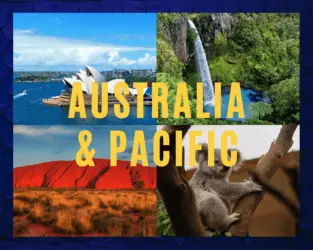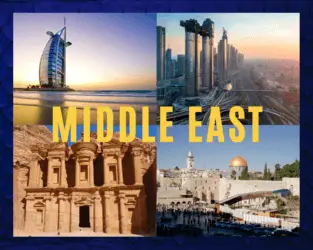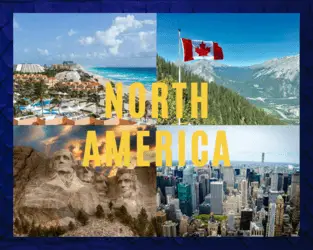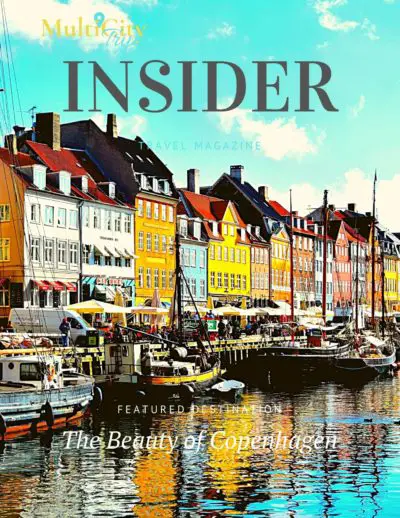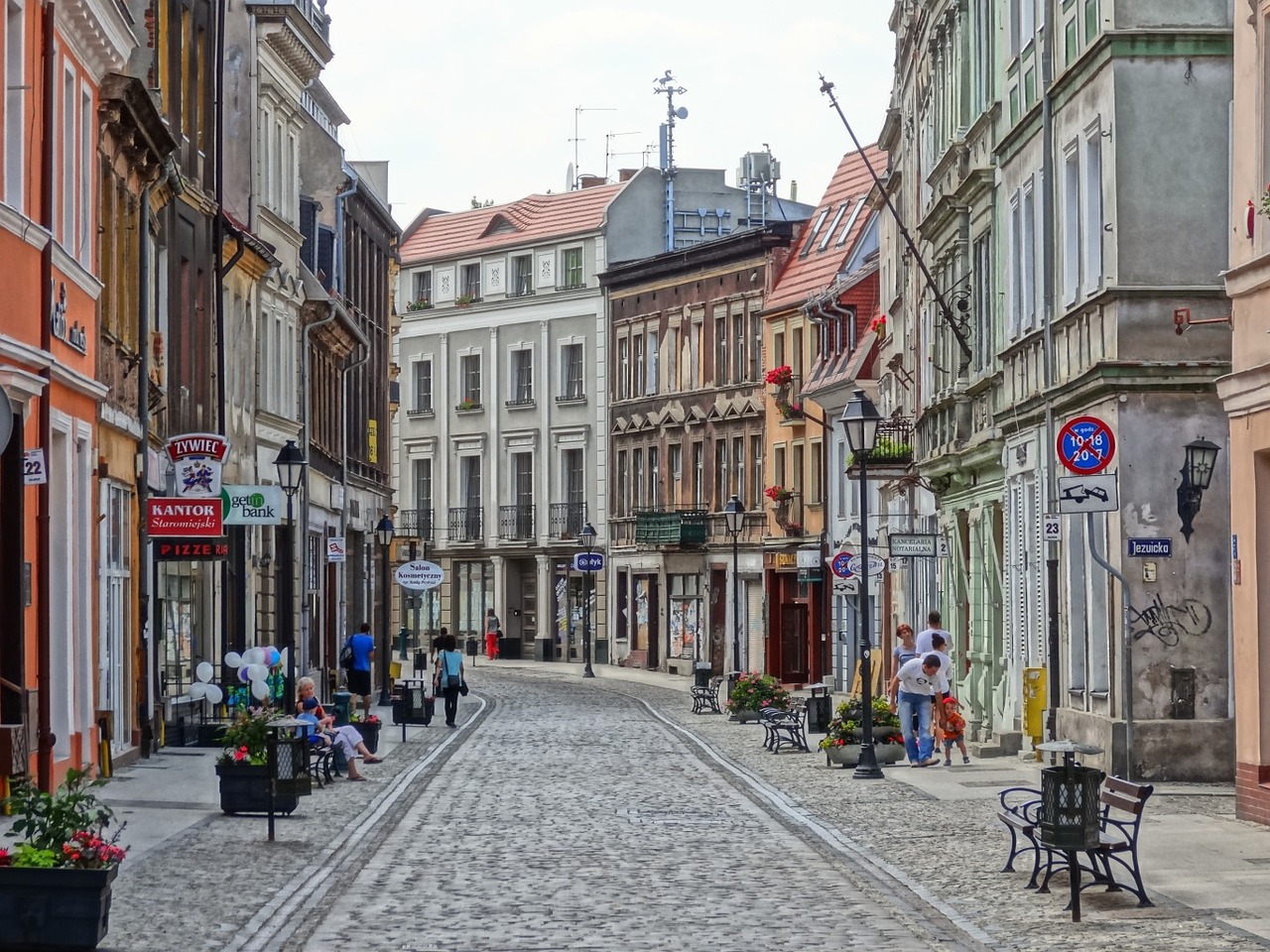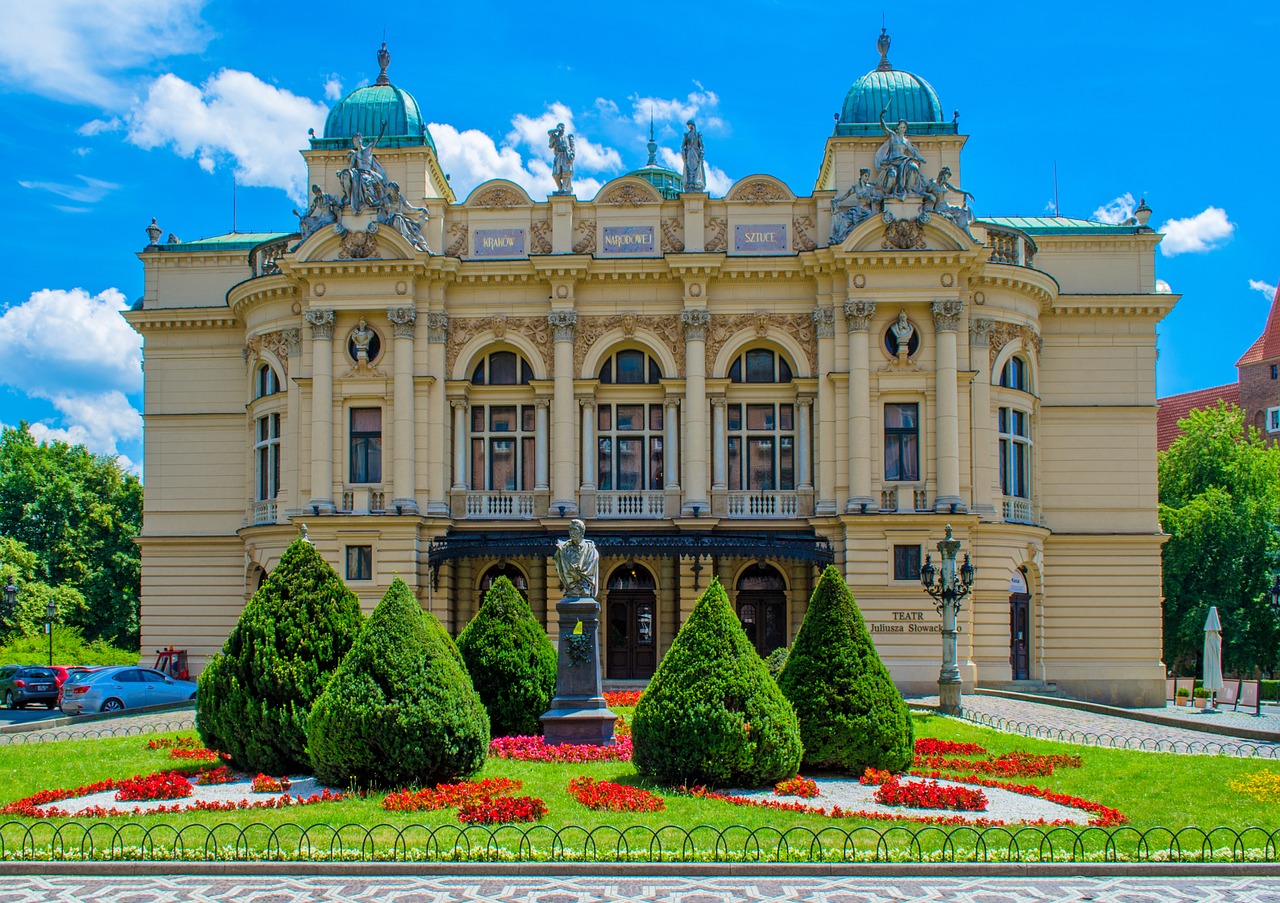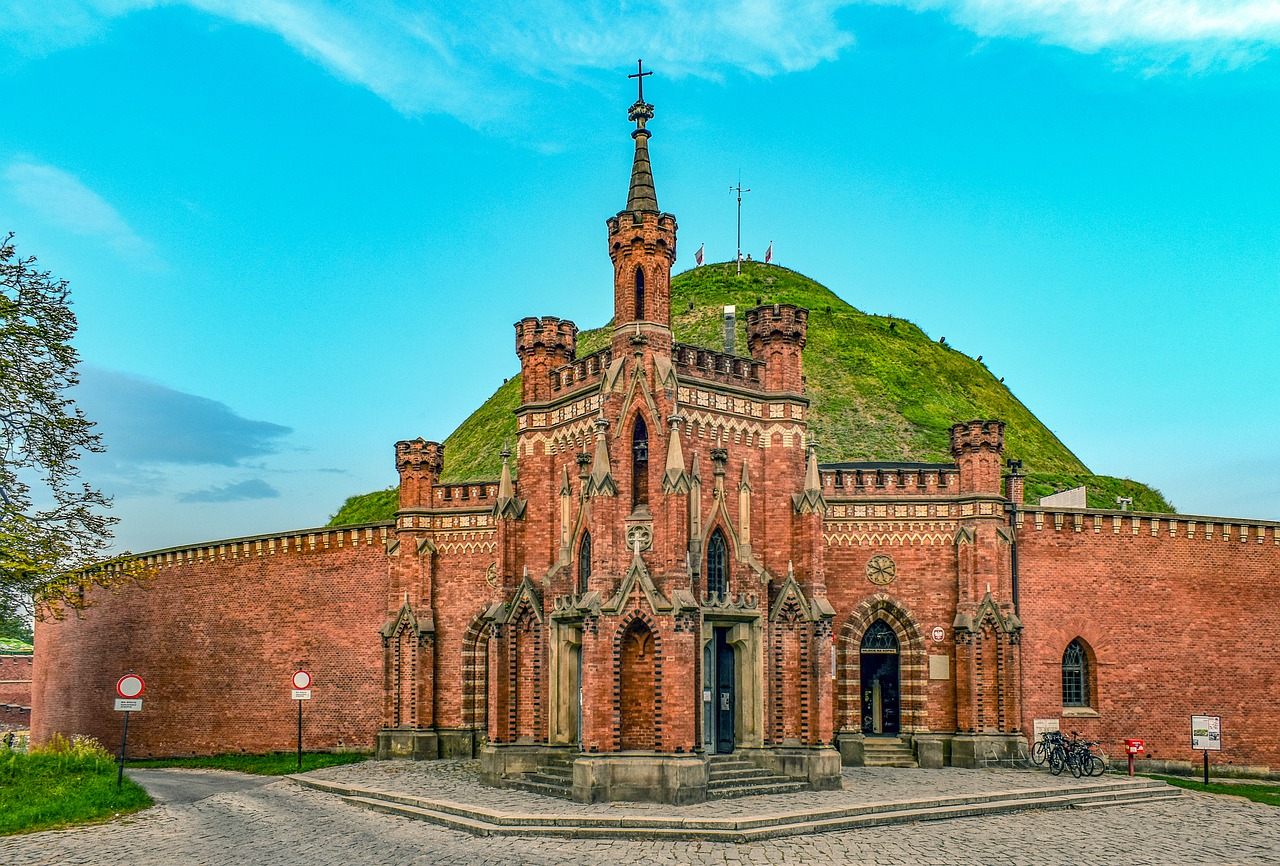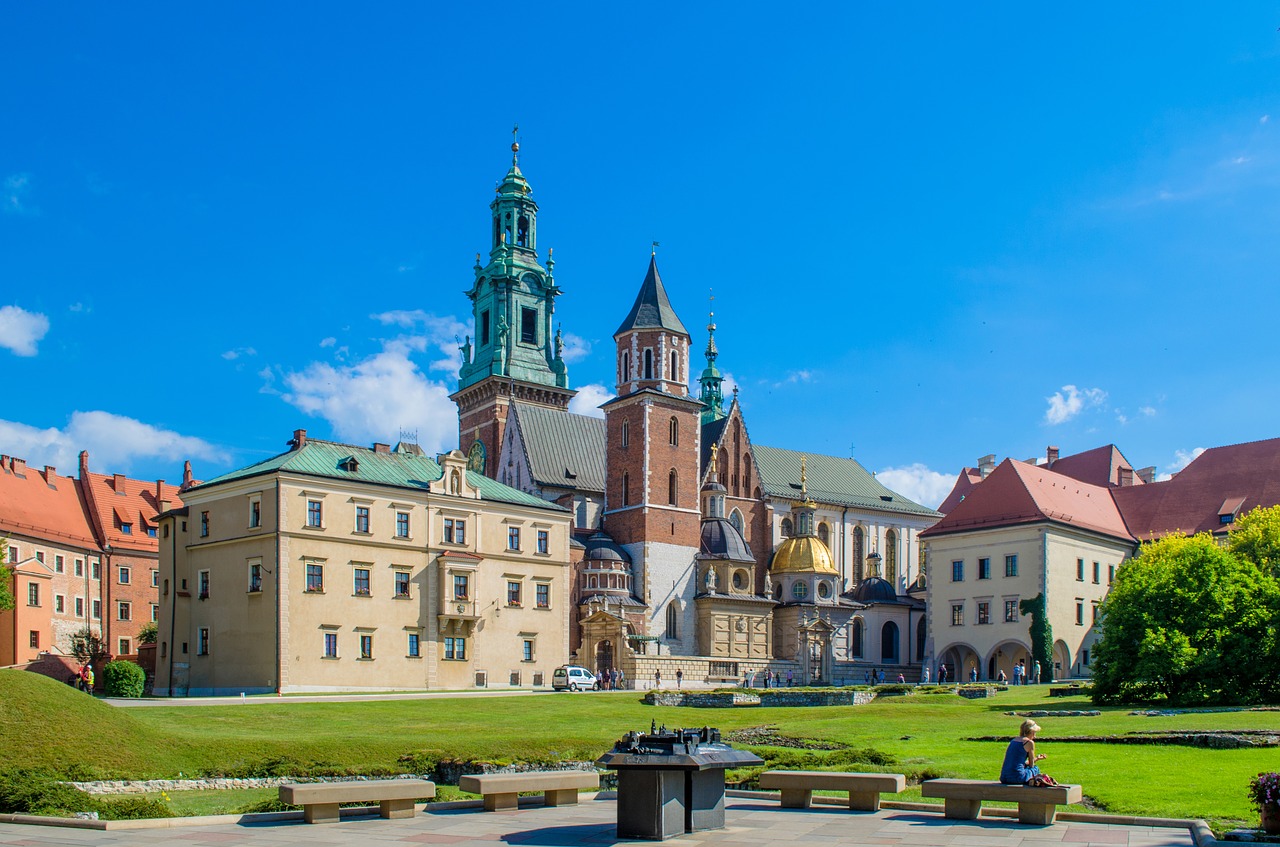Poland
Poland is an eastern European country on the Baltic Sea known for its medieval architecture and Jewish heritage. Warsaw, the capital, has shopping and nightlife, plus the Warsaw Uprising Museum, honoring the city’s WWII-era resistance to German occupation. In the city of Kraków, 14th-century Wawel Castle rises above the medieval old town, home to Cloth Hall, a Renaissance trading post in Rynek Glówny (market square). Nearby is the Auschwitz-Birkenau concentration camp memorial, and vast Wieliczka Salt Mine, with underground halls and tunnels. The Baltic seacoast features beach resorts, the historic port city of Gdańsk, and Gothic Malbork Castle, now a museum. Białowieża National Park preserves one of the last parcels of primeval forest in Europe and is home to European bison. The Masurian Lake District offers swimming and boating. The Tatra Mountains, part of the Carpathians, is a skiing and trekking destination. The town of Zakopane has rustic wood chalets, horse-drawn sleighs, and rafting on the Dunajec River.
Source: https://www.google.com/travel/guide
| Capital | Warsaw |
|---|---|
| Visa & Passport | U.S. citizens may enter Poland for up to 90 days for tourist or business purposes without a visa. Your passport should be valid for at least three months beyond the period of stay in Poland. |
| Currency | Polish złoty |
| Language | Polish |
| Tipping | Tip 10% or 15% if the service was exceptionally good. You can tip the waiter directly, leave it on the table, or say dziękuję (thank you) and the waiter will assume that you don't want change. |
| When to visit | Peak periods include summer (Jun–Aug) and ski season in the mountains (mid-Dec–Apr). Key events include the Jewish Culture Festival (Kraków, Jun/Jul), Summer Jazz Festival (Kraków, Jul), and the International Chopin Piano Competition (Aug), held every 5 years in the renowned composer’s hometown of Warsaw. Poland has a continental, 4-season climate with warm summers and cold winters, with snow in mountain areas. |
Map
Top 5 Best Cities to Visit
Kraków, a southern Poland city near the border of the Czech Republic, is known for its well-preserved medieval core and Jewish quarter. Its old town – ringed by Planty Park and remnants of the city’s medieval walls – is centered on the stately, expansive Rynek Glówny (market square). This plaza is the site of the Cloth Hall, a Renaissance-era trading outpost, and St. Mary’s Basilica, a 14th-century Gothic church. On a hill above the Vistula River are Wawel Cathedral and Wawel Castle, a sprawling Gothic royal palace-turned-museum showcasing European paintings and sculpture. The city’s Jewish history is on view at Oskar Schindler's Factory and the former Jewish quarter, Kazimierz, which is now dotted with hip cafes and bars. Visitors often take day trips to nearby Auschwitz-Birkenau, a Nazi concentration camp memorial and museum, or 327m-deep Wieliczka Salt Mine, with a vast labyrinth of tunnels, chapels, and chambers open to the public for exploration.
Warsaw is the sprawling capital of Poland. Its widely varied architecture reflects the city's long, turbulent history, from Gothic churches and neoclassical palaces to Soviet-era blocks and modern skyscrapers. The city's Old Town was restored after heavy damage during WWII. Its heart is Market Square, with pastel buildings and open-air cafes. The Monument of the Warsaw Mermaid at its center is the city’s symbol. The Barbican and defensive-wall fragments are remnants of Warsaw’s medieval fortifications. The Royal Route runs from the vast, rebuilt Royal Castle, where concerts are held, past churches and neoclassical palaces to lavish 17th-century Wilanów Palace, housing royal memorabilia. The Fryderyk Chopin Museum memorializes the famed composer, a Warsaw native. The high-tech POLIN Museum of the History of Polish Jews and the Warsaw Uprising Museum trace the city’s tragic wartime experience. As Poland’s cultural hub, Warsaw has a thriving nightlife and music scene, both classical and underground.
Gdańsk (Danzig in German) is a port city on the Baltic coast of Poland. At the center of its Main Town, reconstructed after WWII, are the colorful facades of Long Market, now home to shops and restaurants. Nearby is Neptune Fountain, a 17th-century symbol of the city topped by a bronze statue of the sea god. Gdańsk is also a center for the world’s amber trade; boutiques throughout the city sell the ossified resin. On Solidarity Square, the European Solidarity Centre tells the story of the shipyard workers’ union that brought down Poland's Communist regime. Gothic St. Mary’s Church is a massive red brick structure that holds 20,000 people. Along the Motƚawa Canal is the National Maritime Museum, which features a restored medieval shipyard crane. The neighboring town of Sopot is a popular summertime resort area, with a wide beach and long pier.
Wrocław is a city on the Oder River in western Poland. It’s known for its Market Square, lined with elegant townhouses and featuring a modern fountain. Also on the square is the Gothic Old Town Hall, with its large astronomical clock. Nearby is the Panorama of Racławice, a painting depicting the 1794 battle for independence. The Centennial Hall auditorium, with its giant dome and tall spire, lies across the river. In the city center, the White Stork Synagogue contains a museum detailing the Jewish history of the town. The Cathedral of St. John the Baptist has towering twin spires and multiple chapels, including the 18th-century Electoral Chapel. Nearby, the botanical garden is home to greenhouses, an alpine garden, and an arboretum. The Wrocław Fountain features colorful water displays set to music and lights. Close by is Szczytnicki Park, with its manicured Japanese garden and the wooden St. John of Nepomuk church.
Zakopane is a resort town in southern Poland, at the base of the Tatras Mountains. It’s a popular departure point for winter sports and summertime mountain climbing and hiking. Kasprowy Wierch and Gubałówka, reachable by cable car and funicular, are nearby ski destinations offering sweeping mountain views. The town is also known for its turn-of-the-20th-century wooden chalets, symbols of Zakopane-style architecture. On Krupówki Street, the town’s vibrant main thoroughfare, Zakopane-style chalets now house restaurants and shops selling traditional foods, such as oszczypek smoked cheese, and crafts inspired by the indigenous Goral people. Zakopane-style structures are now branches of the Tatra Museum, filled with original 19th- and early-20th-century furnishings. Villa Atma is a museum within Polish composer Karol Szymanowski’s former home. Outside town, Tatra National Park is known for its caves, mountain trekking, and trout fishing at Morskie Oko lake, while hiking trails lead to the top of Svinica, a mountain peak bordering Slovakia
Source: wikipedia
Top 5 Places to Visit
The Wawel Castle is a castle residency located in central Kraków, Poland, and the first UNESCO World Heritage Site in the world. Built at the behest of King Casimir III the Great, it consists of a number of structures from different periods situated around the Italian-styled main courtyard. The castle, being one of the largest in Poland, represents nearly all European architectural styles of medieval, renaissance, and baroque periods. The Wawel Royal Castle and the Wawel Hill constitute the most historically and culturally significant site in the country. The castle is part of a fortified architectural complex erected atop a limestone outcrop on the left bank of the Vistula River, at an altitude of 228 meters above sea level. The complex consists of numerous buildings of great historical and national importance, including the Wawel Cathedral where Polish monarchs were crowned and buried. Some of Wawel's oldest stone buildings can be traced back to 970 AD, in addition to the earliest examples of Romanesque and Gothic architecture in Poland. The current castle was built in the 14th-century and expanded over the next hundreds of years.
Łazienki Park or Royal Baths Park is the largest park in Warsaw, Poland, occupying 76 hectares of the city center. The park-and-palace complex lies in Warsaw's central district on Ujazdów Avenue, which is part of the Royal Route linking the Royal Castle with Wilanów Palace to the south. North of Łazienki Park, on the other side of Agrykola Street, stands Ujazdów Castle. Originally designed in the 17th century as a baths park for nobleman Stanisław Herakliusz Lubomirski, in the 18th century, Łazienki was transformed by Poland's last monarch, Stanisław II Augustus, into a setting for palaces, villas, classicist follies, and monuments. In 1918 it was officially designated a public park. Łazienki is visited by tourists from all over Poland and the world and serves as a venue for music, the arts, and culture. The park is also home to peacocks and a large number of squirrels.
The Market Square, Wrocław is a medieval market square in Wrocław, in southwestern Poland. The square is rectangular with the dimensions 213 by 178 meters and now serves as a pedestrian zone. It is one of the largest market squares in Europe, with the largest two city halls in the country. The buildings around the square are built according to different styles: the middle part of the ring is occupied by a block of buildings consisting of the Old City Hall, the New City Hall as well as numerous citizens' houses. The market square is an urban ensemble with two diagonally contiguous areas - the Salt Market and the square in front of St. Elisabeth's Church. Eleven streets lead to the market: two to each corner, two narrow lanes, and an open outside the square, Kurzy Targ "Chicken Market". The market was founded according to Magdeburg law as early as the rule of Polish Duke Henry I the Bearded between 1214 and 1232. Over time, the patricians' houses appeared and by the middle of the 14th century, they had formed a closed construction with the limits of the plots defined.
Wilanów Palace is a royal palace located in the Wilanów district, Warsaw. Wilanów Palace survived Poland's partitions and both World Wars, and so serves as a reminder of the culture of the Polish state as it was before the misfortunes of the 18th century. It is one of Poland's most important monuments. The Palace's museum, established in 1805, is a repository of the country's royal and artistic heritage and receives around 3 million visitors annually. The palace and park in Wilanów host cultural events and concerts, including Summer Royal Concerts in the Rose Garden and the International Summer Early Music Academy. The palace, together with other elements of Warsaw Old Town, is one of Poland's official national Historic Monuments, as designated on 16th September 1994. Its listing is maintained by the National Heritage Board of Poland. Since 2006, the palace has been a member of the international association of European Royal Residences.
Saint Mary’s Basilica is a Brick Gothic church adjacent to the Main Market Square in Kraków, Poland. Built in the 14th century, its foundations date back to the early 13th century and serve as one of the best examples of Polish Gothic architecture. Standing 80 m tall, it is particularly famous for its wooden altarpiece carved by Veit Stoss. In 1978 it became a UNESCO World Heritage Site alongside the Historic Centre of Kraków. On every hour, a trumpet signal—called the Hejnał mariacki—is played from the top of the taller of Saint Mary's two towers. The plaintive tune breaks off in mid-stream, to commemorate a famous 13th-century trumpeter who was shot in the throat while sounding the alarm before a Mongol attack on the city. The noon-time hejnał is heard across Poland and abroad broadcast live by the Polish national Radio 1 Station. Saint Mary's Basilica also served as an architectural model for many of the churches that were built by the Polish diaspora abroad, particularly those like Saint Michael's and Saint John Cantius in Chicago, designed in the Polish Cathedral style.
Source: https://www.google.com/travel/guide
Useful Travel Guide & Money Saving Tips
Purchase a tourist card – Consider purchasing a tourist card (they typically cost between 130-150 PLN) to gain unlimited access to public transportation (normally for one or three days) and free or discounted access to museums. If you plan to see many attractions, the passes are worth the cost. You can get these cards from the local tourism office.
Free walking tour – The larger cities such as Krakow, Gdansk, and Warsaw usually offer free tours. These are a great way to explore the city while learning about the history, culture, and architecture of the city you're visiting. Your knowledgeable guide will be able to answer any questions you may have as you tour the city - be sure to tip them at the end.
Ridesharing - Ridesharing is a great way to get around Poland at an affordable price. Many of the ridesharing options in Poland have apps, so you simply download the app, find your ride and go! Many travelers find ridesharing more convenient than other forms of transportation and much cheaper than a taxi. You never know who you may be sharing a ride with - you may find some like-minded travelers along the way!
Unfortunately no tours were found.
Unfortunately no accommodations were found.
Poland Vacations & Travel Guide
With our Poland vacations travel guide, you can learn more about this beautiful destination from country information, map, best cities to visit, when and the best time to visit, top highlights, travel guide & money-saving tips and so much more.
Ensure to check out our “Package Deals” tab to review all related Poland vacations with airfare currently available for you to choose from for your next vacation to Poland. When selecting one of our customizable pre-designed packages either from this tab or from our marketplace, you will be able to fully customize your Poland trip with the help of our travel specialist/destination experts.
What happens next?
Once you select a pre-designed package and submit a questionnaire, your dedicated travel expert will work with you to personalize your dream trip exactly how you want. Your package deal includes all travel components and comes with a 100% tailor-made itinerary based on your selection of the pre-designed package.
To learn more about how the process of trip planning using a pre-designed package works in detail, please see our “How It Works” page or review our video on “How to Plan a Multi-City Trip to Europe in 5 Easy Steps” here.
Don’t find what you are looking for in our “Package Deals” tab or in our pre-designed package marketplace? Let our in-house experienced travel experts craft your European journey from scratch with our custom planning option.
If you are one of our Insider Club members, select the “Insider Deals” tab available on this page to access additional pre-designed packages available only with your membership. These exclusive journeys are typically available to members only and may cover journeys beyond Europe. To learn more about your Insider Club membership, please visit the “Insider Club” membership page.
Have questions for us? Schedule a FREE Call with us here or contact one of the travel experts/destination specialists at [email protected], call/text us at (888)223-2316 today.


